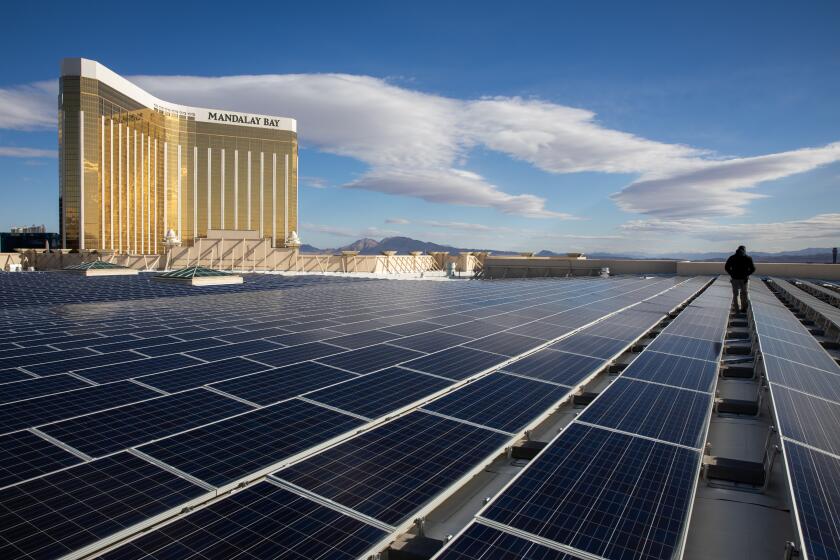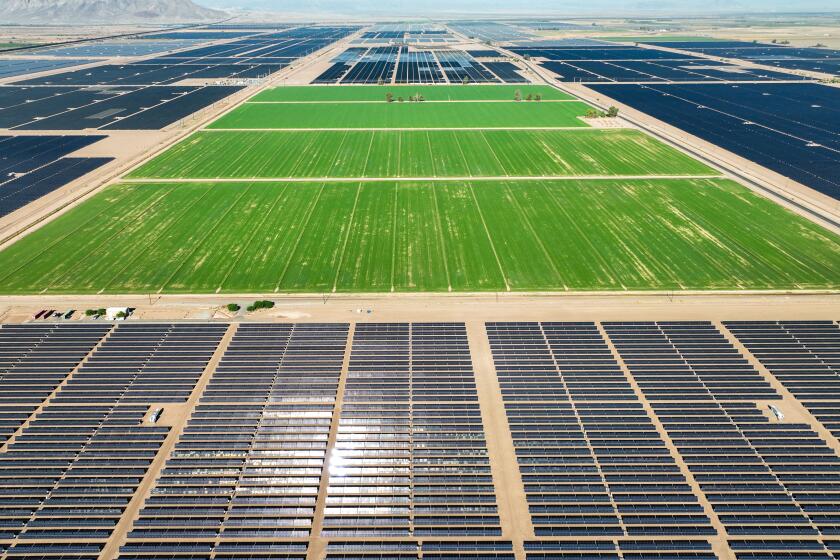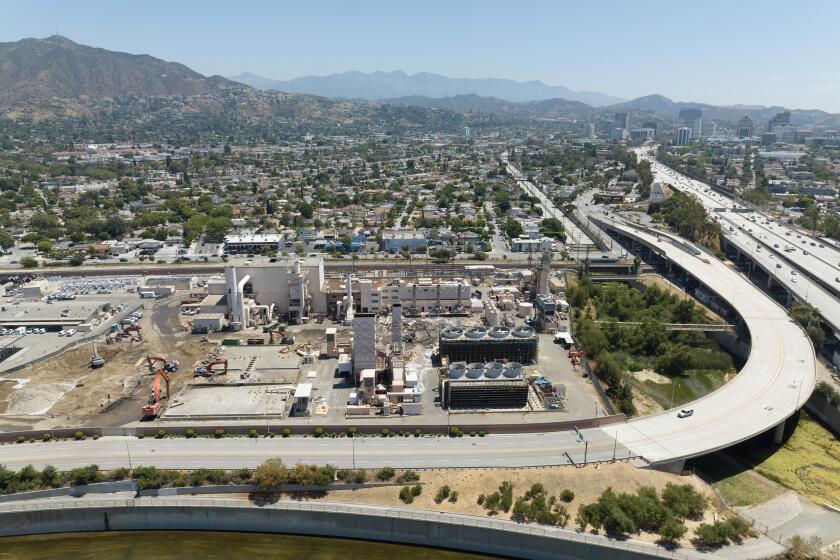As the first generation of solar panels begins wearing out, a recycling industry is taking shape
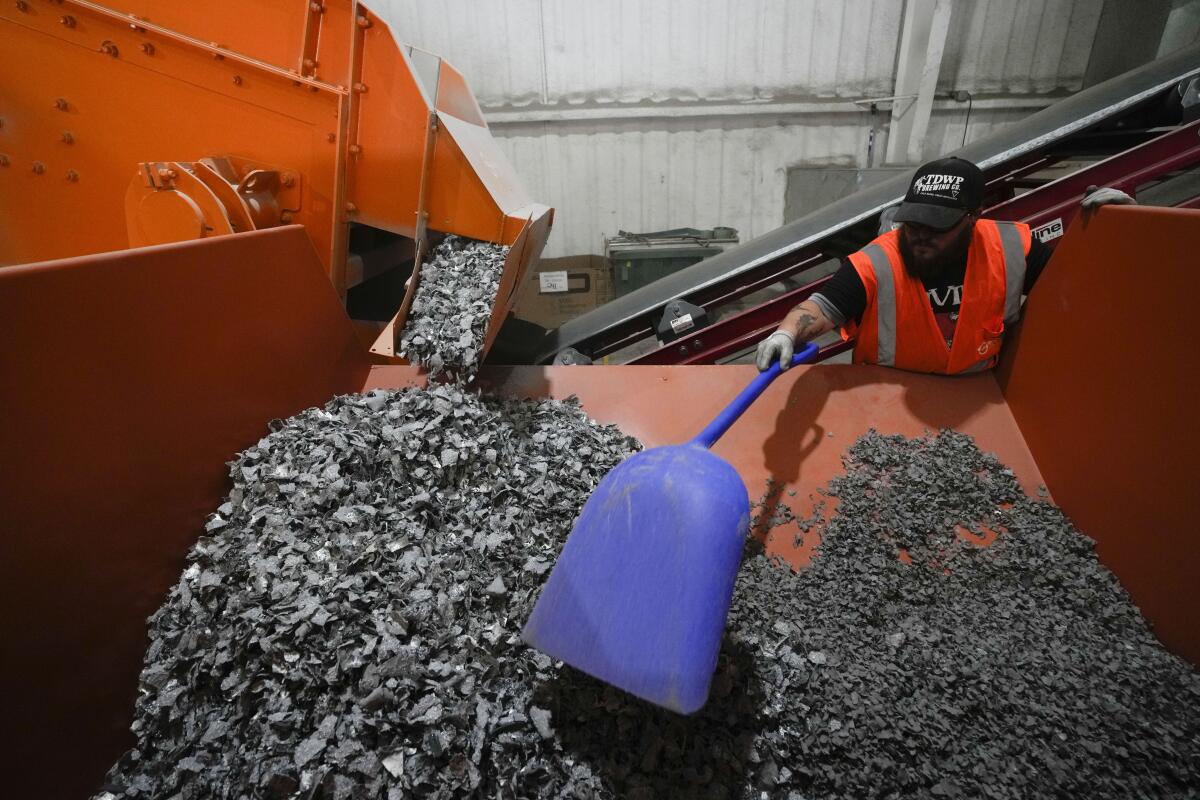
- Share via
Sunlight beats down on a graveyard for dead solar panels in Yuma, Ariz., hundreds stacked in neat piles, waiting for their next life.
Plans to address climate change rely on massively scaling up clean, solar electricity. The great majority of worn and damaged panels is still dumped in landfills. But with more and more piling up, many people know that needs to change.
In this desert city where Arizona, California, Sonora and Baja California meet, North America’s first utility-scale solar panel recycling plant has opened to address what founders of We Recycle Solar call a “tsunami” of solar waste.
The panels, stacked and banded, come here from the company’s main collection warehouse in Hackettstown, N.J., plus six other locations across the country.
Workers maneuver the stacks into the sprawling 75,000-square-foot facility on forklifts, then gently lift each out by hand to begin separating by brand and model. Some have only a few cracks in their glass, sometimes from storm damage.
These can be reused, said Adam Saghei, chief executive of We Recycle Solar, and there is a market for them — clients around the world who search for refurbished panels for their affordability. The Yuma facility, he says, is like “your local thrift store that looks to upcycle.”
America needs lots of clean power, fast. Should it go on public lands or on rooftops?
Those that don’t go toward testing and resale head down a conveyor belt where glass, metals and other materials with value are separated.
Solar panels are built to withstand decades of harsh weather, so it’s difficult to break the resilient bonding that keeps them together. Separating the glass without it shattering, for example, is a challenge. But with robotic suction arms assisted by workers, they come apart.
Some of the highest value materials are copper, silver, aluminum, glass and crystalline silicon. Repurposing these means finding new uses for them, such as selling glass to companies that do sandblasting.
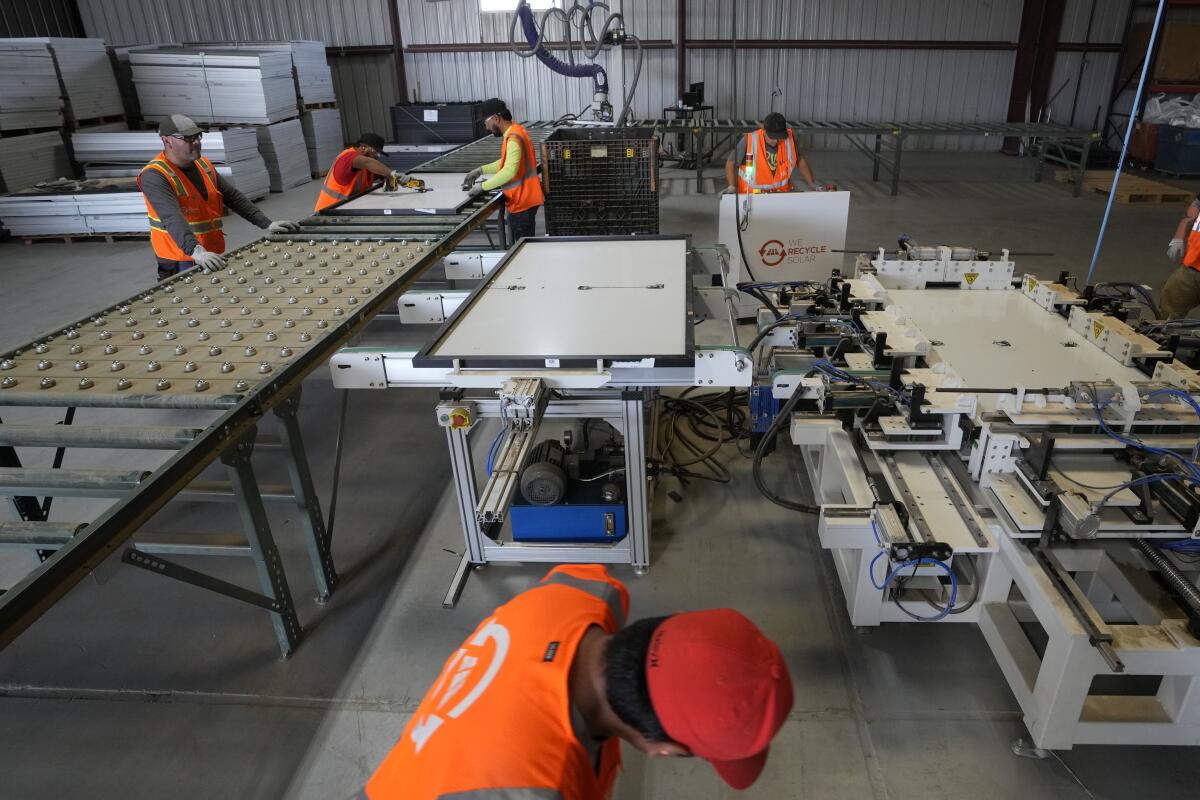
For Saghei, the inspiration for the company came in 2017. He was working in the computer electronic waste sector, seeing solar spread across warehouse roofs and wondering where it would go eventually. He realized green technology doesn’t stay green once it is decommissioned or retired.
“Solar energy is a great technology, but it can feed a whole industry like aluminum and glass. Why are we spending tens of millions of dollars on these materials from overseas when we can produce them right here, right now?” he thought.
Replacing agriculture with solar panels could help solve the West’s energy and water crises. But farmers are fighting back.
Copper is one metal that the recycling yields, said Dwight Clark, director of compliance and recycling technology at We Recycle Solar, as others nearby sorted incoming panels. “Granted, it’s not a lot of pounds per solar panel. But when we do 10,000 pounds of solar panels an hour, we end up with a hundred pounds of copper an hour coming out of it,” he said.
“The aluminum ... could come back as more solar panel frames or it could go into the flight deck of a new Boeing aircraft.”
By 2050, solar waste will total some 78 million tons globally, said Mool Gupta, a professor in the Department of Electrical and Computer Engineering at University of Virginia. The reason recycling and recovery isn’t robust yet, Gupta said, is that companies struggle to justify the $30-per-panel cost when it costs only $1 to send it to a landfill.
If we hope to one day see 100% of retired solar recycled, said Garvin Heath, a senior scientist at the Department of Energy’s National Renewable Energy Laboratory, “Let’s not make it any more expensive than what it would cost to landfill the module ... let’s not have it cost the consumer anything and instead have it break even for the recycler.”
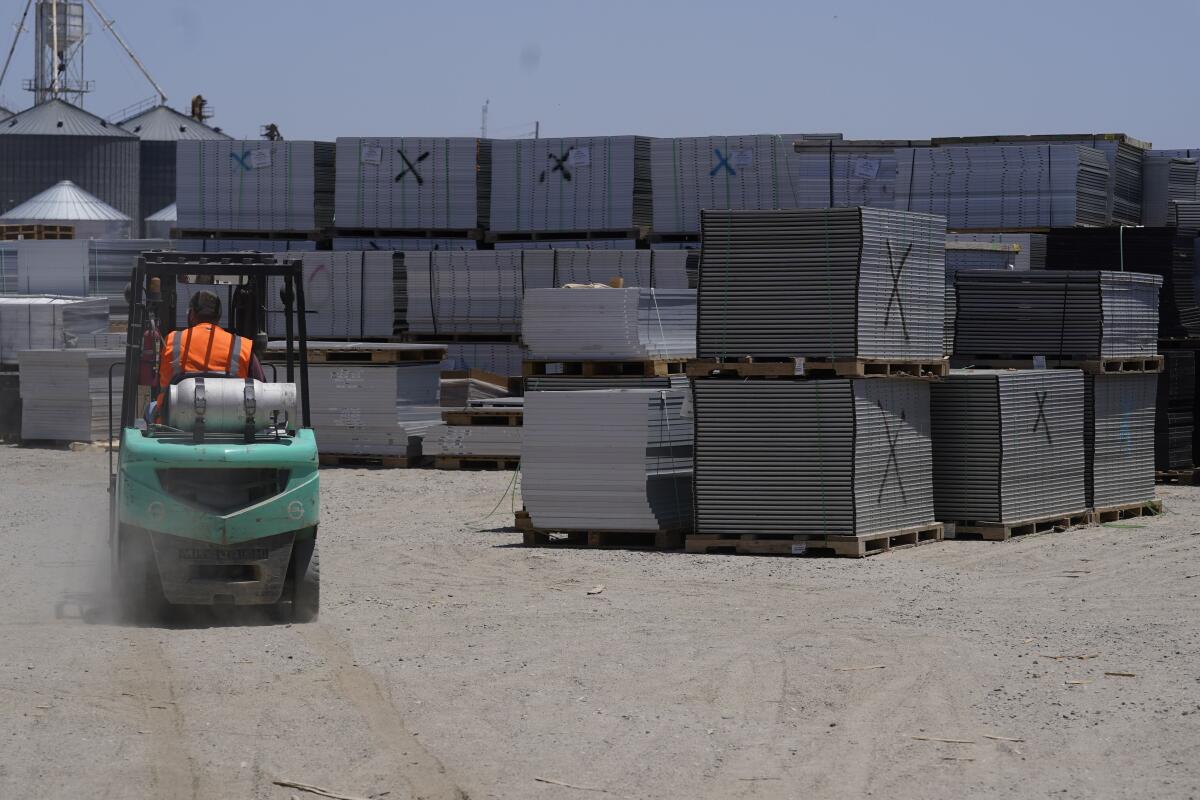
Other companies are starting to get into the business.
Solarcycle, a startup based in Odessa, Texas, raised $30 million earlier this year, led by Fifth Wall, an asset manager focused on building decarbonization. And Solarpanelrecycling.com is an affiliate of electronics recycler PowerHouse Recycling.
The European Union has rules that require recycling of electronic waste under its Waste Electrical and Electronic Equipment Directive.
Market researcher Visiongain estimates the global market at $138 million for last year and growing fast, boosted in part by incentives offered in the Inflation Reduction Act in the U.S.
Shutting down gas plants faster could reduce carbon pollution — while also causing power shortages.
People need to stop scrapping the modules as fast as possible, said Jack Groppo, professor of mining engineering at the University of Kentucky.
“Once the solar panels go into the landfill, they’re gone unless we go back and mine the landfill,” he said.
Groppo estimates that in 20 years people will mine landfills to recover valuable materials in the junked panels, but “it makes an awful lot more sense for us to separate them now.”
The Yuma facility can process 7,500 panels in a single day or roughly 69 million pounds per year. As of early June, it estimates more than 650,000 tons of carbon dioxide have been avoided. It is reusing about 60% of the panels that come in.
The company plans to open another recycling facility alongside a large solar manufacturer in the South.
For now, solar recycling companies are still figuring out how to make money.
We Recycle Solar sends out employees to dismantle large solar arrays, and that is currently its biggest source of revenue. Reselling refurbished solar panels is No. 2, and recycling brings in the least. Decommissioning and resale are actually subsidizing some of the recycling costs, Saghei said.
But Gupta said these profitability challenges are temporary and will be overcome. Researchers are hard at work on solving them, he said.
“Too many lives are lost to pollution, and solar is one of the top solutions.”
More to Read
Inside the business of entertainment
The Wide Shot brings you news, analysis and insights on everything from streaming wars to production — and what it all means for the future.
You may occasionally receive promotional content from the Los Angeles Times.
